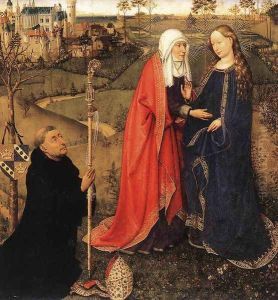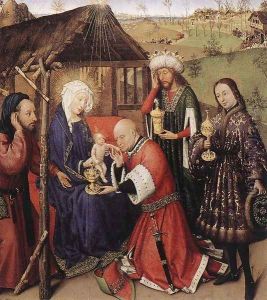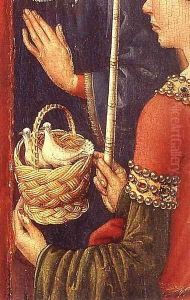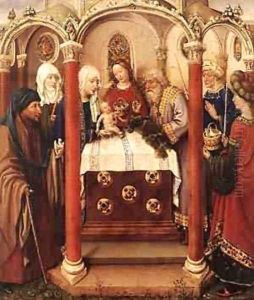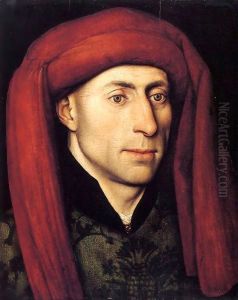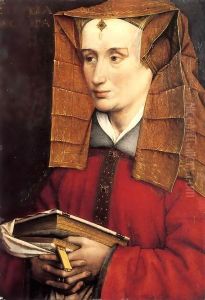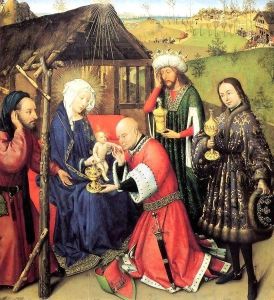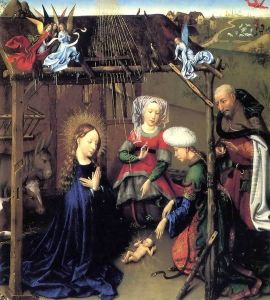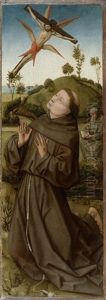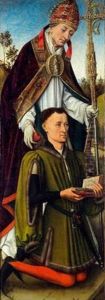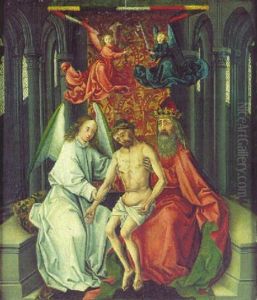Jacques Daret Paintings
Jacques Daret was an Early Netherlandish painter born in Tournai (now in Belgium), then part of the Burgundian Netherlands. His exact date of birth is not well-documented, but he is believed to have been born around 1404. Daret's early life is somewhat obscure, but it is known that he was apprenticed to Robert Campin, also known as the Master of Flémalle, one of the foremost painters of the time. This apprenticeship would have been crucial in Daret's development as an artist, and it is likely that he worked in Campin's workshop alongside other notable artists such as Rogier van der Weyden.
Daret became a master painter in his own right and is known to have established himself in Arras, in present-day France. The records from Arras mention him from 1433 onwards. His work reflects the influences of his teacher Campin and is characterized by a keen attention to detail, a strong sense of realism, and a use of rich, vibrant colors. He was also influenced by Jan van Eyck, another pioneer of the Northern Renaissance.
While Jacques Daret's complete oeuvre is not fully known, he is attributed with a small number of works that have survived. One of his most significant contributions is a series of panels from the Altarpiece of the Virgin, also known as the Aix Annunciation, because they were long located in Aix-en-Provence. These panels depict scenes from the life of the Virgin Mary and are celebrated for their narrative quality and emotional depth.
Daret's career seems to have been quite successful, as indicated by records of his financial transactions and property acquisitions. However, much of his life and work remains shrouded in mystery due to the lack of extensive records. Daret's death is recorded in 1468, and he is remembered as an important link between his teacher Campin and his contemporary Rogier van der Weyden, forming a bridge in the development of the Early Netherlandish painting tradition.
